Today we are here to show you the best enterprise SEO tools, solutions, biggest SEO mistakes, and a lot more. Because saying that data is at the core of every business has become a cliche, but the truth goes deeper. Data is the business itself for the majority of enterprises.
Data management, analysis, and protection are every business’s top priorities because it is their most valuable and irreplaceable asset. Utilizing your data for search engine performance optimization is part of SEO analytics. You may pinpoint spots on your website that need work and learn how to fix them with SEO analytics. You may monitor statistics like your site’s crawlability, page speed, and conversion rate optimization.
Enterprise SEO is getting more challenging and time-consuming as there are millions of pages and keywords to manage and report on. For organic search marketing teams in a large firm managing organic search activities, using enterprise SEO tools can boost efficiency and productivity.
What are enterprise SEO tools?
Enterprise SEO has no accepted definition; however, an enterprise is typically a big company. The goal of SEO is to have your website appear at the top of search results on Google and other search engines. Therefore, enterprise SEO helps Fortune 1000 or Global 2000 firms’ organic (unpaid) search ranks, which in turn boosts sales. These strategies are frequently both high-level and low-level, and big teams are devoted to aligning them with business objectives.

Enterprise SEO definition
A group of SEO techniques aimed at enhancing a major company’s organic visibility is referred to as enterprise SEO.
Businesses with websites with thousands of pages need specialist SEO teams and advanced tactics to increase traffic. Enterprise SEO teams provide major enterprises with practical recommendations that increase income and a scalable, strategic method of expanding the business.
What is SEO and how it works?
“Search Engine Optimization,” often known as SEO, is the practice of obtaining visitors via unpaid, editorial, or natural search results in search engines. It seeks to raise the position of your website on search results pages. Keep in mind that the more individuals will view a website, the higher it appears on the list.
Machine learning changed marketing strategies for good and all
Why is enterprise SEO important?
Enterprise SEO has become more difficult and time-consuming due to the hundreds of thousands, tens of thousands, or even millions of pages, sites, and keywords that must be managed and optimized. By utilizing enterprise SEO tools, you can manage organic search campaigns more quickly, accurately, and with fewer mistakes.
SEO marketing
Your company will gain trust organically if your SEO and user experience are good. The search results that are solely the product of a user’s search are known as organic searches. Over time, you will continue to develop and refine your digital marketing strategy as well as your entire organization by naturally building trust.

If you provide customers with what they want, you establish yourself as a reliable source they can rely on. Users are aware of their wants. So, your SEO will suffer if you don’t live up to user expectations. Customers will start to trust your brand if your platform delivers the content they need, whether it’s information, or solutions to their questions, goods, or services. Your digital marketing will perform better in terms of UX and SEO as you build more trust.
Benefits of using enterprise SEO tools
The following advantages can be achieved thanks to enterprise SEO tools:
- One place for many tasks. In a single system, enterprise SEO tools handle a variety of activities. When compared to employing single-function point solutions, the integration of tasks, reporting, and user rights gives significant advantages to enterprise-level SEO operations.
- Better localization across the globe. Enterprise SEO tools come with built-in diagnostics that can be quite helpful in locating site-wide issues across languages, nations, or regions on a worldwide scale. These tools reveal both large-scale and small-scale problems with infrastructure, templates, and pages.
- Golden insights regarding the current state of search engines. Dedicated teams and engineers are employed by SEO software manufacturers to monitor algorithm updates and their effects on ranking elements.
- Instant data reports. Many businesses try to update spreadsheets with a ton of data manually. However, it doesn’t give a comprehensive picture of the facts. In order to make reporting quick and simple, several business SEO platforms provide highly configurable reporting tools that are widget- and wizard-driven.
Understanding your present marketing procedures, knowing how to assess success, and being able to pinpoint areas that require development are all essential components of the decision-making process for the enterprise SEO tools you choose.
Enterprise SEO solutions
From rank-checking tools and keyword research toolkits to full-service systems that manage keywords, links, competitive intelligence, foreign rankings, social signal integration, and workflow rights and roles, enterprise SEO tools come in a variety of forms and sizes.

The bulk of the SEO programs evaluated in this list provide the following fundamental features:
- Keyword ranking and research
- Backlink analysis
- Tracking of social signals
- Rank tracking
- Data management APIs
Enterprise SEO tools might also offer more thorough link and site analytics, including predictive scoring systems to find possibilities to boost brand websites or link authority. Vendors also start to set themselves apart by providing more frequent data updates or more modules, sometimes at an additional cost, such as local or mobile SEO.
How enterprise SEO is different than regular SEO?
There is no question that enterprise SEO and traditional SEO share the same basics. But there are some significant distinctions between strategy and execution. Traditional SEO doesn’t typically require a large staff with members committed to various tasks. Your team will be a lot smaller because each employee can concentrate on several tasks at once. Increases in organic search traffic are necessary for businesses adopting traditional SEO.
Each member of the digital marketing team for an enterprise SEO project will have a very narrow focus. They will delve deeply into the regions they have been given to work in and search for ways to boost profits. The gains in traffic typically have significantly smaller percentage increases because these businesses are so big and well-established. Adding just.02% more organic search traffic could result in thousands of additional website visitors.
Enterprises, caution your “data in motion”
However, just because your business is large does not imply that you require a corporate website. How many pages, products, and services your website has is more important. This is one of the causes for hiring staff or a company that specializes in managing niche websites.
Enterprise SEO and traditional SEO have some differences between them.
- As you would have imagined, traditional SEO is used on websites that have fewer than 100 pages and as many as 1,000 pages.
- Larger websites with thousands of pages often use enterprise SEO. Major corporations with thousands of products and a separate page for each product require the assistance of expert enterprise SEO tools and teams.

And when it comes to keywords:
- In general, small business SEO focuses on long-tail keywords with less competition.
- Whereas enterprise SEO targets short-tail keywords with higher competition.
The long tail is a business technique that enables businesses to make huge profits by selling small quantities of difficult-to-find goods to lots of clients as opposed to only selling big quantities of a small number of popular goods. The phrase was first used in 2004 by Chris Anderson, who suggested that if the store or distribution channel is large enough, low-demand or low-volume products can collectively command a market share that approaches or exceeds the very few current bestsellers and blockbusters.
You may read this theory in Anderson’s book called “The Long Tail: Why the Future of Business is Selling Less of More.”
Enterprise SEO employs the fundamental SEO principles as well as more sophisticated, time-consuming strategies that can significantly affect the number of conversions that take place on the website.
Large websites employ enterprise SEO because it aids in developing a specialized company strategy that links SEO, content marketing, public relations, and social media.
Best enterprise SEO tools
A large business needs a comprehensive tool that can do research, carry out activities, and manage an SEO strategy. The enterprise-level marketing departments of today are supported by these four apps, which offer centralized, all-in-one SEO administration. To make it easier for you to choose the ideal one for you, we’ve outlined each one’s capabilities. Let’s delve into the best enterprise SEO tools.
BrightEdge
As a general indicator of your visibility based on your local carousel, videos, photos, links, and e-commerce signals, BrightEdge provides a special proprietary metric called Share of Voice. It’s simpler to use for teams with less SEO expertise and it helps you prioritize work as you take on your SEO issues.

In-depth competition analysis is another service that BrightEdge offers, providing you with information on the pages, page templates, and inbound links that are helping your competitors succeed in the search engine results pages. The discovery tools from BrightEdge can help you identify chances you’ve missed as well as terms that are successful for your rivals. BrightEdge enables you to develop a 360-degree perspective of your digital marketing plan by fusing social data, domain analytics, and SEO statistics. Basically, BrightEdge is one of the best enterprise tools you can find out there.
Linkdex
As implied by the name, Linkdex provides excellent link-building tools. You can make notes for each connection you’re fostering to show your team where you are in the process in addition to seeing which sites link to your competitors and your pages.
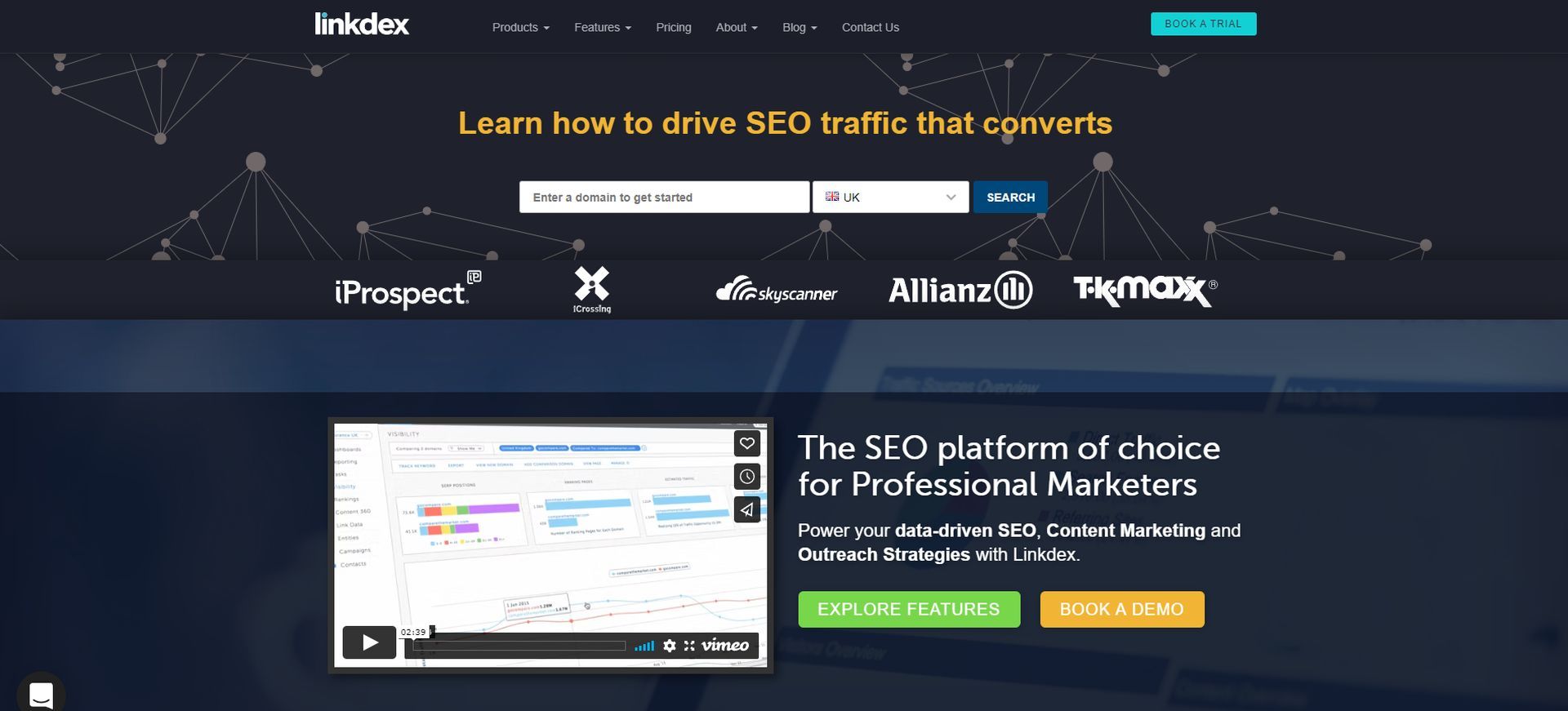
From a management standpoint, task management is one of Linkdex’s coolest features. Within one handy dashboard, you can allocate, check off, and analyze various SEO duties. The potent tracking and forecasting features provided by Linkdex can also be used to determine which optimization adjustments will have the most impact. For local visibility, you can then refine your study to the zip code level.
seoClarity
seoClarity has to be in the best enterprise SEO tools list for numerous reasons. Your entire marketing team may use the customized SEO dashboards you create with seoClarity. To find duplicate content and site issues, you can do site audits and deep crawls.
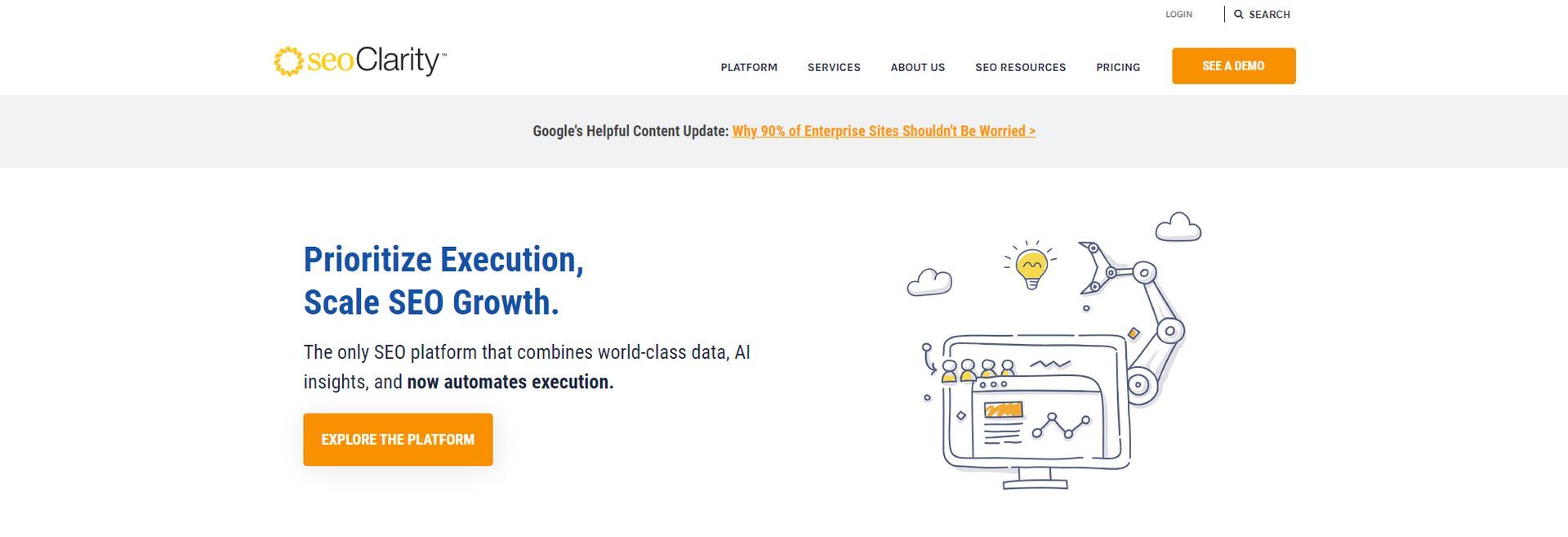
With the help of seoClarity’s Local Clarity feature, businesses that divide their clientele according to location can benefit from local keywords. Find out which of your domain pages can currently generate the highest SEO benefits by using the Keyword Clarity tool. Link Clarity will highlight the sites that require inbound connections the most, as well as notify you of broken links and modifications to the page rank of related domains.
SearchMetrics
SearchMetrics offers everything we expect from enterprise SEO tools: SEO and content research, SEO-optimized content briefs, competitor research, data reports, research cloud, content experience, search experience, and site experience…

This all-inclusive tool aids in your planning, execution, monitoring, and reporting.
The user interface is quite simple to use, and it’s a fantastic platform for team collaboration. Without leaving the Suite, create content on the platform, tag other users, and follow projects and workflows. Increase your progress by integrating APIs and using consumer insights.
Conductor Searchlight
To give you a detailed daily snapshot of your search rankings, Conductor Searchlight makes use of interfaces with Adobe Omniture and Moz OpenSite Explorer. To generate and market content that affects your rankings, it also offers tools for analyzing which content is most in demand. Surely, it is one of the most interesting enterprise SEO tools to consider.
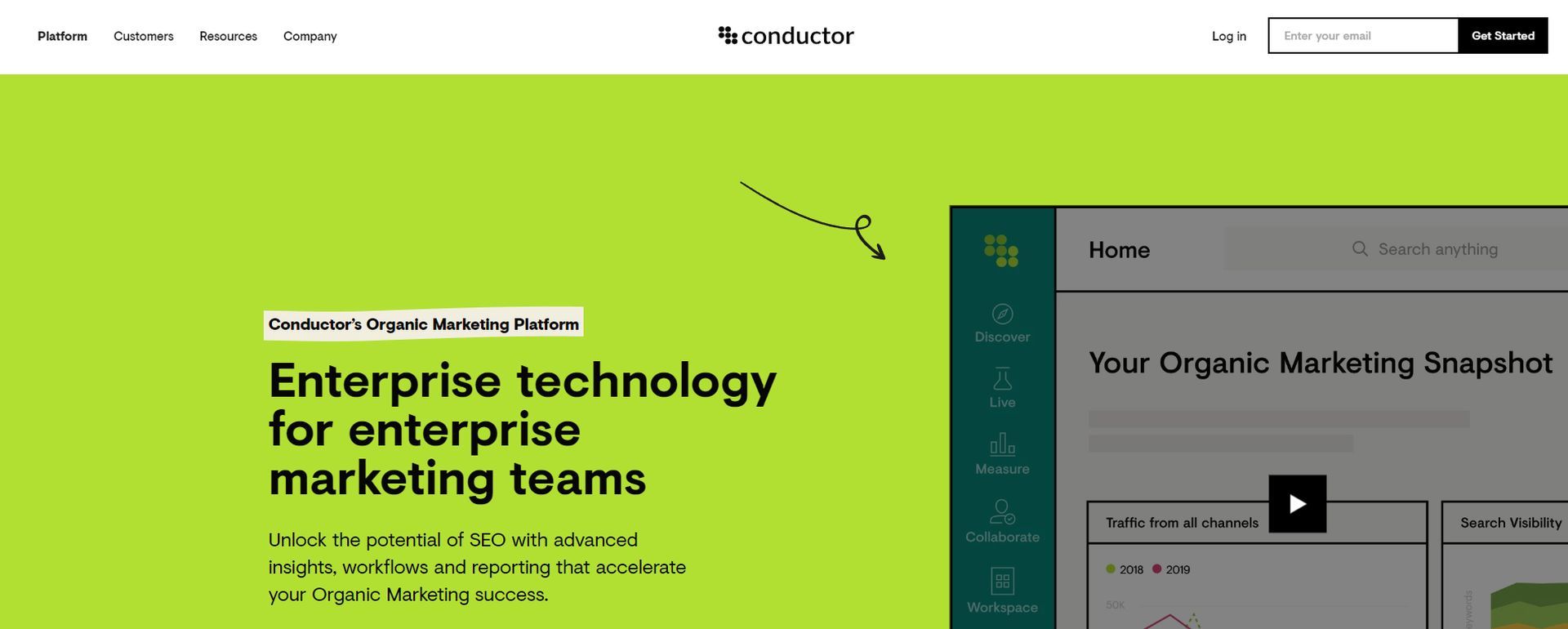
Additionally, Conductor Searchlight can assist you in finding simple adjustments that will raise page ranks. For instance, Conductor Searchlight may advise you to add an internal link with your keyword as the anchor text to your chosen landing page if a page is performing well for a keyword but isn’t your ideal landing page.
To use Conductor Searchlight, you’ll need a team with some SEO expertise; while it makes suggestions for jobs and provides excellent insights into what needs to be fixed, it doesn’t always assist you in determining your top priorities. Your employees will value the thorough analysis and the lovely user interface if they are informed about SEO.
MarketMuse
MarketMuse offers levels to meet your budget and objectives, ranging from straightforward optimization tests to comprehensive content strategy development. It uses mountains and mountains of data to inform you about content planning and is referred to as an “AI Content Intelligence and Strategy Platform.” Heavy lifting that would take you hundreds of hours is handled by machine learning.
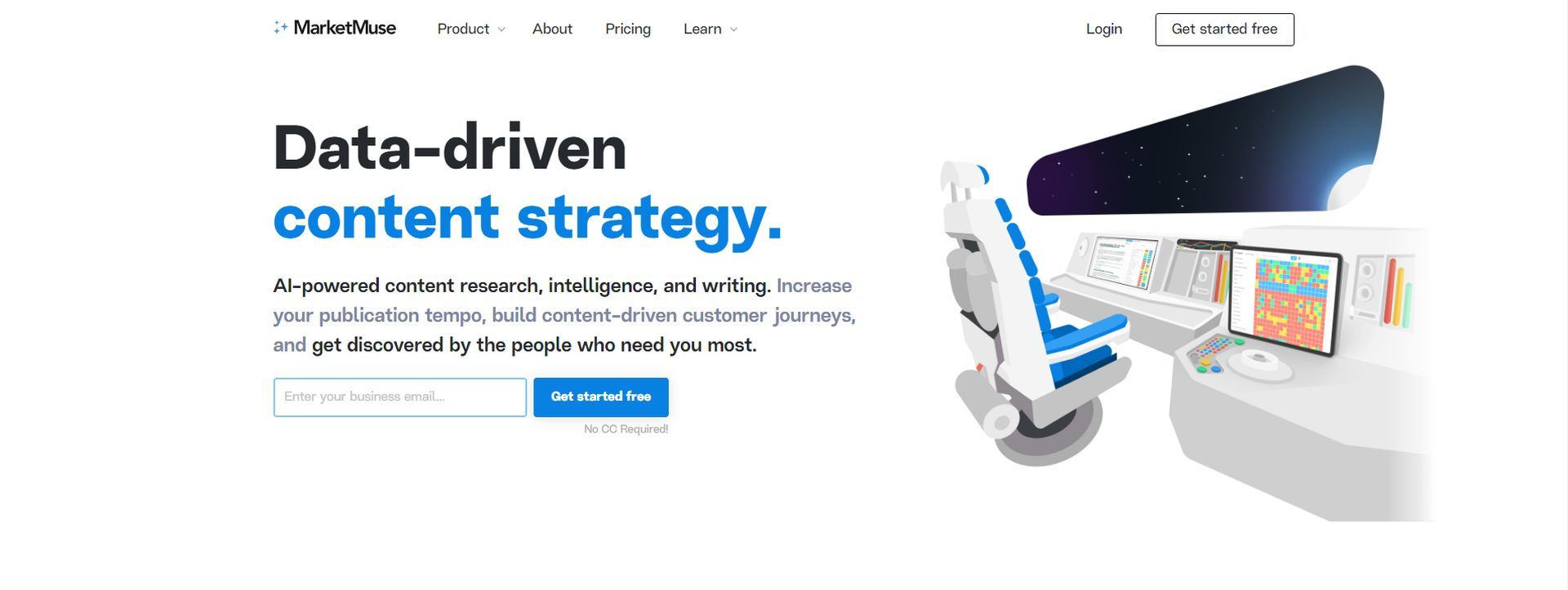
Before your material goes online, you may use this tool to predict how well it will do. Even optimal content briefs can be generated by it to help your production workflow. Additionally, it contains a natural language generator that can even try generating your content for you!
Surfer
Surfer is a content optimization platform that automates tasks that many SEO specialists previously had to perform manually. It evaluates the search results and chooses the most effective way to optimize content.
In essence, this algorithmically-driven tool checks the top URLs for a certain keyword and collects insightful data on what makes these pieces of content successful as well as how to apply this information to your material.
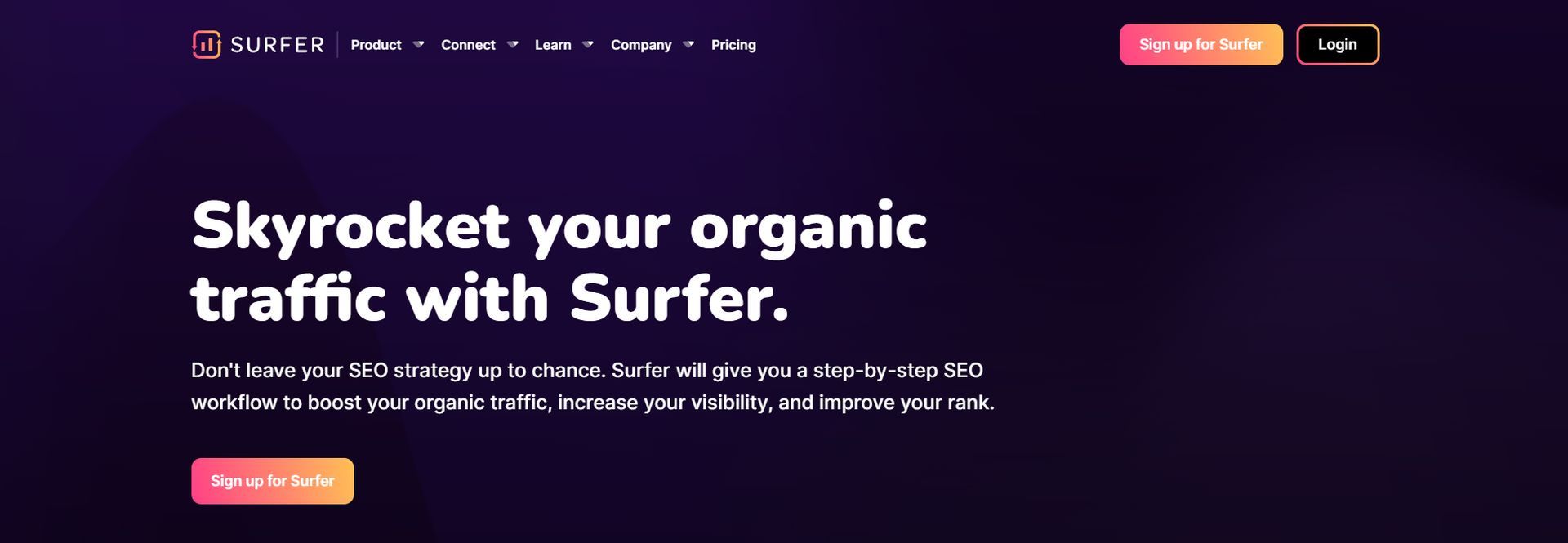
Because Surfer’s Business subscription level permits up to 140 audits every month, the participation of 10 team members and 70 content editors, it is excellent for businesses.
This entails that your company can use the Content Editor to edit up to 70 pieces of content while auditing up to 150 pages or posts each month.
SparkToro
An audience research tool called SparkToro assists companies in producing more user-friendly content. It is one of the best enterprise SEO tools out there without a doubt.
And without writing with your target audience in mind, you cannot produce amazing content. In order to help you develop content that appeals to your customers’ interests and behavior, SparkToro examines the websites your customers visit, the social accounts they follow, the hashtags they use, and more.
The idea is to “forget audience surveys” in favor of letting AI generate precise and beneficial audience insights with a few simple clicks.

Even while the Agency subscription bundle is targeted toward marketing agencies, the same tools might be useful to businesses as well. This pricing option offers unlimited searches, up to 250 social media results, demographic data, and up to 50 users for your team.
Every enterprise should utilize Spark Toro since it can search through millions of social and web results to identify the interests of your audience.
What’s the difference between SEO and local SEO?
Traditional and local SEO both concentrate on raising your ranks in internet search results so that more people can discover, get in touch with, and buy from your company.
Local SEO enables you to seize local search territory to interact with searchers in your area, unlike traditional SEO, which concentrates on increasing your site’s visibility on a national or international scale. Many of the tactics used by SEO and local SEO are similar. However, local SEO strategies use unique techniques to connect you with local searchers.
Biggest enterprise SEO mistakes
Not doing channel optimization is one of the worst enterprise SEO mistakes. Digital marketing strategies at the corporate level are frequently spread over several channels. SEO, paid search, social media, sponsored social media, syndication, and any other channel via which a company may be able to connect with and attract its target market to its website. While some of these methods can be quite expensive, SEO’s cost per acquisition is frequently less than that of these other channels.

In order to grow their operations effectively, many enterprise-level brands—if not most—need to use numerous channels. Both are trying to expect organic to carry everything and ignoring it are mistakes in enterprise SEO. In most circumstances, expecting a single channel to satisfy the organization’s demand-generating needs is just neither practical nor efficient.
Don’t forget to optimize page templates. It’s crucial to have a well-managed taxonomy for categorizing content on your site and determining where various categories of content will live, as well as structurally sound site architecture. In addition, the template that the content is placed in determines numerous on-page SEO elements. The placement of the h1 tag title, how it displays on the page, and how the end user inputs and edits the copy are all determined by templates.

An additional illustration is internal linking, a crucial on-page SEO strategy. A useful template for blog posts or product pages will have an on-page widget that shows links to similar content and can even be set up to automatically fill in information based on semantic or related meta tagging. Due to the variety of content types that an enterprise organization may need to include in its catalog, it is simple to make the SEO mistake of neglecting to include SEO in the design of new templates as well as ignore reviewing legacy templates to ensure that new content is being set up for long-term success.
Cloud costs have started to become a heavy burden for the IT sector
Update your posts instead of expanding aggressively. Enterprise websites typically have a lot of history and are quite huge websites. “A lot of history” includes years’ worth of content creation, website updates, product introductions, product discontinuations, site relocations, and other activities. The website and its contents probably went through multiple digital teams throughout that time, each of which brought their own set of standards and procedures to the table. It’s very simple to get off track at an enterprise scale.

Maintaining an active sitemap.xml file and monitoring the number of indexed pages in Google Search Console can help. That said, it frequently happens that older pages on a related topic on existing URLs could have been rewritten, re-optimized to fit the new keyword targets, and republished. An example of this would be when the need to capitalize on a specific group of high-value keywords arises, and significant resources are invested in creating new content.
Understand your aim. The idea of “enterprise” SEO is generally associated with website size rather than just business size, though this isn’t always the case. According to this guideline, enterprise SEO tools typically comprise thousands of pages dispersed over numerous categories, including product pages, blog posts, asset landing pages, about us pages, and more. Having so many pages raises an issue of scale.

Most of the time, it just isn’t practical or cost-effective to give each page the same level of care. Enterprise SEOs and digital marketers will instead concentrate their time and efforts on website areas that generate the most value for the company. Although there is nothing fundamentally wrong with this method, it does run the danger of ignoring possible SEO growth or risk areas.
What is a backlink in SEO?
Links leading back to a page on your website from other websites are called backlinks. Because they reflect traffic flowing to your own website from another website, backlinks are also known as inbound links. Your backlink profile’s quantity and quality both play a role in how Google and Bing will rank you.
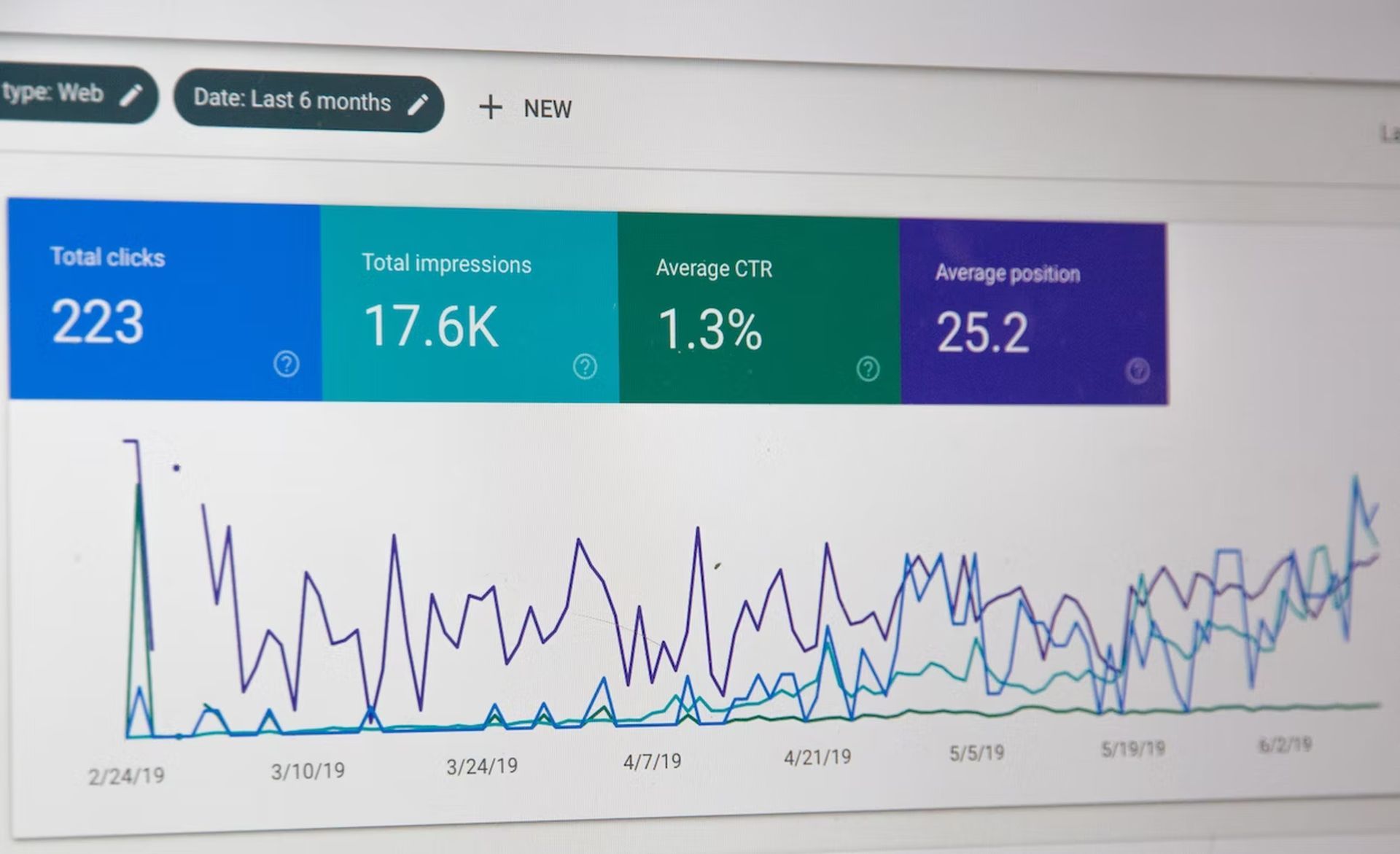
Backlinks are seen as a sign of how well-liked your website is by consumers. An essential component of search engine optimization (SEO) and SEO strategies is the implementation, management, and analysis of backlink performance.
How many types of links are there?
A link, usually referred to as a hyperlink, is a word, phrase, or image that can be clicked to move from one online page to another.
There are three types of links:
- Internal links: Hyperlinks that take users from one page of your website to another.
- External links: Hyperlinks that direct users to another site.
- Backlinks: Hyperlinks that other pages lead to your page.
For your website’s SEO, each of these links is crucial. That is why you need enterprise SEO tools because it is not the easiest thing to follow all these important data.
When it comes down to it, backlinks come in two types: dofollow and nofollow. A web page reader won’t be able to tell the difference between a backlink that is dofollow and one that is nofollow. The source code is where the difference lies. The effect of a backlink on your SEO profile is determined by a special element in the source code that controls how Google and other search engines evaluate the backlink.

What is an example of a backlink?
As an illustration, suppose you wrote an article about artificial intelligence and included a link to a page in Dataconomy to either cite the source of the original information or to substantiate your argument.
However, if the backlink has a do-follow code, it is more valuable.
You would have to look at the specific code to see how it is written, but a do-follow link will look like this:
<a href=“dataconomy.com”>dataconomy</a>
A nofollow tag would look like this:
<a href=“dataconomy.com” rel=“nofollow”> dataconomy</a>
But why is this vital?
A backlink effectively informs the search engine that the link is natural and that the other website wants Google to give it link equity for being the original source.
As a result, a backlink or do-follow link helps to transmit that information and aid in the SERPs’ assessment of the authority of your site.
A nofollow link may also be beneficial, but the search engine has the last say.
Therefore, a backlink that lacks the nofollow tag is a good example.
How many backlinks should a website have?
According to experts, in order for a website to compete for SEO, it needs between 40 and 50 backlinks to the homepage and between 0 and 100 backlinks to each web page. The PageRank ratings of those backlinks are crucial, though, because the more valuable they are, the fewer links are required to improve overall ranks.

Conclusion
For any enterprise, using organic search as a lead and revenue generator is crucial. Organic search can generate up to 50% of leads for an e-commerce website, compared to paid adverts, which only account for 5% of leads. Enterprise SEO analytics can undoubtedly boost revenue when used efficiently, without requiring significant outlays for paid advertising.
A complete guide for marketing automation software
For example, if you have an e-commerce page, your main goal will be to create leads for the most conversions and sales possible. However, accomplishing this goal is difficult given the crowded industry and the difficulty that potential buyers have found your website in search engines. This is where enterprise SEO tools come into play. It assists you in analyzing the data of your site and makes recommendations for specific adjustments that can help you enhance organic traffic to your site, which will eventually increase sales and revenue as well.





